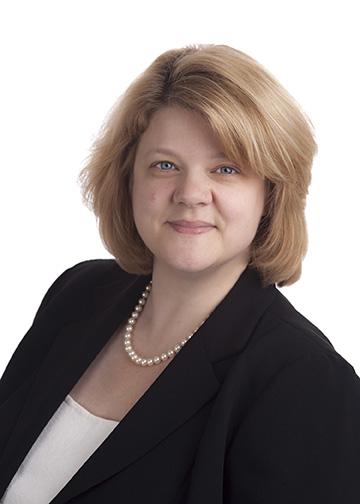MilliporeSigma Employee Spotlight: Jacqueline Ignacio

MilliporeSigma Employee Spotlight: Jacqueline Ignacio
As part of our employee spotlight series, we’re sitting down with Jacqueline Ignacio, global manager, customer sustainability solutions at MilliporeSigma, to learn more about the work she’s doing to change the way the life science industry looks at waste. The life science business of Merck KGaA, Darmstadt, Germany operates as MilliporeSigma in the U.S. and Canada.
1. How did you get your start with MilliporeSigma?
I started at MilliporeSigma in a sales position. I had been working for another company previously in inside sales. Prior to that, I was doing massage therapy, teaching and working as a doula. I was eager to get back into the life science industry and sales afforded me that opportunity.
2. Tell us about your background (where you grew up, went to school, your family, etc.).
I’m English, believe it or not. I was born there, and my parents immigrated to the U.S. when I was about three years old. I have two younger brothers and one older sister. I grew up in Baltimore, Maryland and went to school at Hood College where I earned a Bachelor of Arts in biology. At that time, it was a small women’s college, so it suited me well.
3. Explain your role at MilliporeSigma.
My role today is to oversee the customer recycling programs and develop a strategy for new programs. In addition, I also work with the Massachusetts Institute of Technology (MIT) Media Lab as our member liaison. I really enjoy this part of my job because I get to learn about all the cutting-edge technologies being developed—and come back into the MilliporeSigma organization and see the advanced research we’re doing as well. It’s great being able to make connections with the team at MIT.
4. What sparked your interest in the circular economy?
When I first started, I was excited that there even was a recycling program. I always knew recycling was important, but at the time I didn’t know a lot about what happened on the back end. My interest and passion have grown as I’ve learned more about it. My business background—and life science in particular—has helped me think about how we can make recycling work so there’s a win-win on all sides. Sustainability is crucial for the environment, and the economy part of recycling is important because it creates jobs.
5. When it comes to designing programs that meet the sustainability needs for customers, where do you start?
The first step is to identify what the problem is. When I first started, the pain point was that customers didn’t have an outlet for recycling their single-use plastic waste. The products being used in labs and facilities are made from mixed materials and the plastics cannot be easily separated by conventional recycling methods. Another challenge was to develop an efficient solution that didn’t disrupt the normal workflow. There’s a lot of due diligence that must go into developing a recycling process. Another important factor we had to look at was transportation. Where would waste go and how would it get there? We were then able to create a unique program with Triumvirate Environmental where customers could fully recycle all single-use and disposable products, including bio-hazardous classified material. Once recycled, these products are given a second life as industrial-grade plastic lumber products.
6. How have you seen recycling practices in the life science industry transform over the past 5-10 years?
In the past five years, I’ve noticed more and more customers are expressing interest in recycling programs. New England BioLabs was one of the first companies that had sustainability embedded in their culture and they created a recycling program for polystyrene coolers over 30 years ago. More recently, we’ve seen an improvement in the types of things that can be recycled. For example, nitrile gloves, pipet tip boxes and other packaging materials are being recycled through various vendor programs. Customers are starting to question why there is so much plastic in their products and packaging—and have been asking us to come up with solutions. In the past three years, I would say this conversation has increased dramatically. Reducing plastics from the front end of the product design is something I’ve heard more, too. I believe this is a crucial part of creating a circular economy. If we can’t completely give up plastic, then the question we all need to ask is how can we reduce the amount we use by redesigning from the beginning?
7. What types of recycling programs would you like to see in the future?
I would like to see plastics recycled back to their monomers. The mechanical and some chemical recycling systems we have today are not giving us a high value, high quality material. If we were able to go back to the monomer and rebuild the plastic, we can disrupt the market—and that’s true recycling. I would also like to see the ability for more local communities to have systems that can recycle plastic back to monomer, with plastic manufacturing being handled in a similar fashion. I think this would help bring the process closer to home and change people’s perspective about plastic and how it really can be reused forever.
8. What is most rewarding about your job; what makes it all worthwhile?
I have two favorite things—one is being the leader in biopharma recycling and the other is our collaboration with MIT Media Labs. Both allow me to be involved in creative thinking around some of the world’s biggest challenges. My role with MIT gives me access to their future-forward solutions, using technologies like artificial intelligence. Then, I get to come back and connect with team members in my own organization and learn about the new technologies they are working on and how they can benefit from the work at MIT. Making those connections and getting the discussions started really excites me! Both positions have allowed me to meet so many different people in all areas of the organization. It really helps me to see how the technologies we’re using and the ways we’re using them are truly innovative.
9. What is one thing that few people know about you?
A lot of people close to me know that I was a massage therapist and post-partum doula. One of the things I learned from this experience—and still practice today—is taking mental breaks to keep myself grounded. For groups and teams, I also like to lead meditations. It’s a great way to help people feel more comfortable and grounded, and I hope ultimately, more connected to their work.
10. If you could visit any place, where would it be and why?
If I could visit one place, it would be the international space station. Space exploration has always been something that fascinates me—I grew up sitting in front of the TV watching the Apollo missions takeoff and visiting the Smithsonian National Air and Space Museum. It would be phenomenal to go up in space, look back at Earth and do experiments. I think it could give me a different perspective—to be able to see the Earth from above is kind of awesome and humbling.

